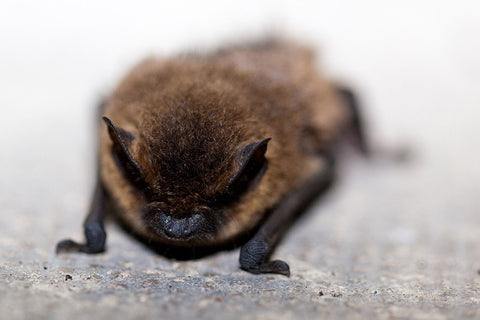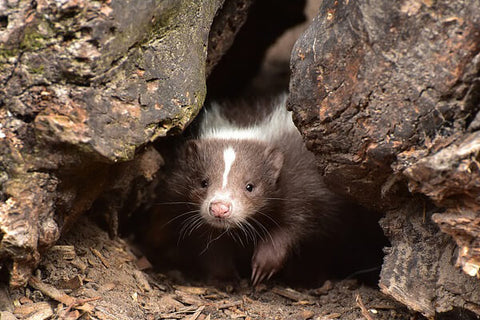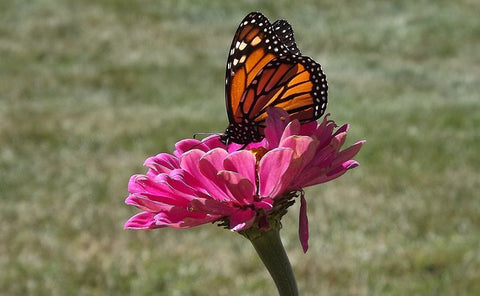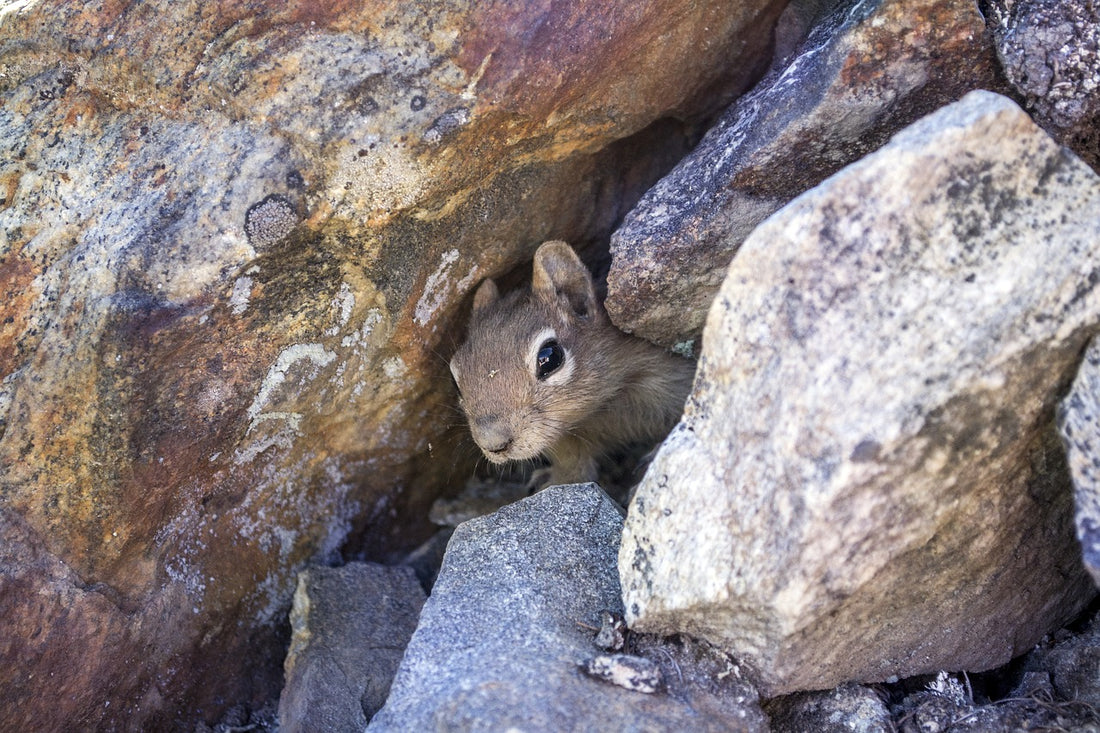What is hibernation?
Hibernation is a state of deep sleep that various animals undergo during the cold months of winter. Hibernation isn't limited to mammals, which most people think; reptiles, fish, amphibians, and insects also hibernate. During this phase, the animal drastically lowers its metabolism and heart rate and goes into a sleep state. There are two types of hibernation: true hibernation and torpor.
- True hibernation - in true hibernation animals fall into a deep sleep. The animal's body temperature, breathing, and the heart rate reduce to such an extent that to the untrained eye, the animal can appear to be dead.
- Torpor - a temporary hibernation characterised by a short-term drop in body temperature, resulting in a state of low metabolism which is influenced by outside temperatures and food availability.
Why do animals hibernate?
Animals hibernate for various reasons, but the primary goal is usually to escape the harsh weather of winter and the scarcity of food in the winter months. For a more exhaustive guide on hibernation take a look at our article on why animals hibernate.
Mammals
Mammals are the first animal group that comes to mind when thinking about hibernation, images of an adorable bear family instantly spring to mind, though cute they may be, it’s a well-known fact that bears hibernate, so let's cover some more unique examples.
Bats

Bats are true hibernators and the only airborne mammals that, when left alone, are the longest true hibernators; some species are known to hibernate for several months, from September to April!
During hibernation, bat's heart rate drops from approximately 400 beats per minute to 25 beats per minute. Fat stored within the body sustains the bats during this deep sleep which they emerge from by February or March in search of food and water.
Striped skunks

Unlike most rodents and birds, which hoard food for the cold months, the striped skunk spends the fall consuming as much food as possible so it can stay warm throughout winter. The striped skunk gains a thick layer of fat which it metabolizes during its time of dormancy.
Preparing for hibernation, a skunk will obstruct the entrance to its burrow with whatever it can find, most commonly with leaves, grass, and other plant matter. Skunks will even go as far as cohabitating using social thermoregulation to keep each other warm when they usually wouldn't be very tolerant of each other.
At the beginning of spring, skunks will emerge and seek a mate and only after breeding, the skunks will part ways and venture to rebuild fat reserves eating a diet rich in insects, small mammals, and often even rubbish discarded by people.
Fat-tailed dwarf lemur

The fat-tailed dwarf lemur is an extraordinary animal that is closely related to humans and is the only primate we know that hibernates. It is also the only animal that entirely falls asleep while hibernating in its natural environment!
Typically hibernating for seven months, the fat-tailed lemur appears to be hibernating to avoid the drought of the dry winter months. The lemur hibernates in a tree hole which is inadequately insulated and does not regulate its body temperature; as a result, its body temperature fluctuates with the temperature outside.
Research is currently being conducted on fat-tailed dwarf lemurs for their unique abilities, and could someday prove vital to sustaining humans for long distance space travel.
Reptiles
Just like with mammals, reptiles can also go into a state of hibernation, called brumation; during this period the reptile may not eat, drink, move, or even defecate! This can last for several weeks for some reptiles.
Bearded Dragons

At specific times of the year, when food becomes tricky to obtain and when the temperature drops, just like mammals, bearded dragons will go into a state of hibernation called brumation.
During brumation the dragons will not leave its burrow and may not eat, drink or move, this is because the insects which the dragons had been feasting on in the summer months have now diminished and the food is difficult to find. Reptiles, being cold-blooded creatures, have a tough time functioning in cold temperatures as their bodies depend on warmth from the sun in order to digest their food, and break it down into the nutrients.
Bearded dragons kept as pets often still hibernate even though they do not need to. Experts aren't entirely sure what causes this, but many reptiles have been known to retreat to colder areas of their enclosure and attempt to brumate.
Insects
Insect hibernation is also different from that of mammals. During this period, the insect goes into a state known as diapause. This is related to a long-term state of suspension of life functions and makes insects fascinating creatures for research.
Not only insect eggs have to endure the frosty months, but many adults also do that, and in a fantastic way; they alter the composition of their blood, producing an antifreeze concoction that prevents them from freezing!
Butterflies and moths

Hibernating between October and March, these insects enter a state of hibernation called diapause and undergo behavioural and physiological adaptations to the harsh winter months.
Adult moths can often be observed hibernating in clusters in the cracks of wood; however, because moths and butterflies have more complicated life cycles, the adaptation varies throughout each stage.
Bumblebees

Bumblebees are true hibernators, typically hibernating between October and March. The interesting fact is that not all of the bees hibernate in bumblebee colonies; only new queen bees can hibernate as they are the only ones who can endure the harsh winter weather, all other bees die. This includes worker bees and even old queens!
The new queens survive through drinking copious amounts of nectar to increase fat reserves. They should ideally weigh around 0.6g for maximum chances of survival.
In extremely low temperatures, the concoction of chemicals known as glycerol is produced by the queen and acts as an anti-freeze preventing the formation of ice crystals.
Fish
Fish are ectothermic, and cannot hibernate due to the fact they cannot actively down-regulate their body temperature or their metabolic rate. However, they can experience dormancy from decreased metabolic rate due to cold temperatures and low oxygen - hypoxia.
African Lungfish

The African lungfish is a truly exceptional example of a fish. It enters a state of dormancy and is suitably adapted to its environment in Africa which is prone to drought. The lungfish can sleep out of water for up five years without any sustenance, only to awaken when freshwater returns!
During this suspended animation, the fish also doesn't produce any waste and doesn't eat or drink. Can you imagine five years without a meal? Or even worse, five years without going to the toilet!
Amphibians
Because amphibians are such a primitive group of animals, they can't control their body temperature. This is a serious issue for all amphibians during the winter when temperatures drop.
Amphibians typically head to the bottoms of lakes and ponds during winter to partially bury themselves in the mud in order to keep warm. Frogs are an excellent example of this and have highly specialised skin which can take in oxygen and expel carbon dioxide.
Some terrestrial amphibians produce their own anti-freeze, similar to what insects have been observed doing. This dormancy called estivation is comparable to hibernation. It is a dormant state a creature assumes in response to unfavourable environmental conditions.
Leopard frog

The leopard frog typically hibernates in oxygen-rich water, at the bottoms of ponds and lakes. It is a common misconception that they spend the harsh months of winter in the same way as aquatic turtles, completely buried in the mud at the bottom of a pond. However, if frogs were to do this, they would almost undoubtedly suffocate as the oxygen levels in the mud just aren't adequate.
Leopard frogs spend their time either partially buried or on top of the mud and are even known to awake and swim around to more oxygen-rich areas of the water every now and then.
Wood frogs

Wood frogs are another example of amphibians which hibernate; however, the wood frog does something remarkable none of us would expect!
This frog will search for a place to seek safety from the treacherous weather. When temperatures plummet, the frog is in real danger of freezing. How does it survive, you ask?
Anti-freeze! Ice crystals develop in places such as the body cavity and bladder and under the skin. What the wood frog does which is so remarkable is it produces a high concentration of glucose in the frog's vital organs preventing it freezing.
When partially frozen, it will stop breathing and the heart will stop beating and will appear to be dead. But when the hibernaculum warms up above freezing, the frog will begin to thaw, and standard functions will restore, the heart will start to beat, and the toad will start breathing and continue to go about its business.
Scientists have conducted many experiments on these frogs, freezing them for 24 hours and thawing them in lab conditions. The frogs took approximately 10 hours to thaw before they sprung back to life.
Other animals that hibernate or enter states of dormancy
- Bears
- Box turtles
- Ground hog
- Squirrels
- Dormice
- Lady birds
- Newts
- Toads
- Slow worms
- Adders
- Grass snakes
- Hedgehogs
- Snails
- Humming birds
- Badgers
- Chipmunks
- Marmots
Sources
- Ed Grabianowski (2017) How Hibernation Works
- Fritz Geiser (2004) Metabolic Rate and Body Temperature Reduction During Hibernation and Daily Torpor
- BBC Nature (2014) Estivation
- Steve Harris (2010) How to tell Torpor from Hibernation
- Jo Price (2015) What is Hibernation?
- https://animalsake.com/hibernating-animals-list
- https://www.sciencenews.org/article/natural-antifreeze-prevents-frogsicles
- https://www.scientificamerican.com/article/how-do-frogs-survive-wint/
- http://animals.mom.me/list-animals-hibernate-3236.html

